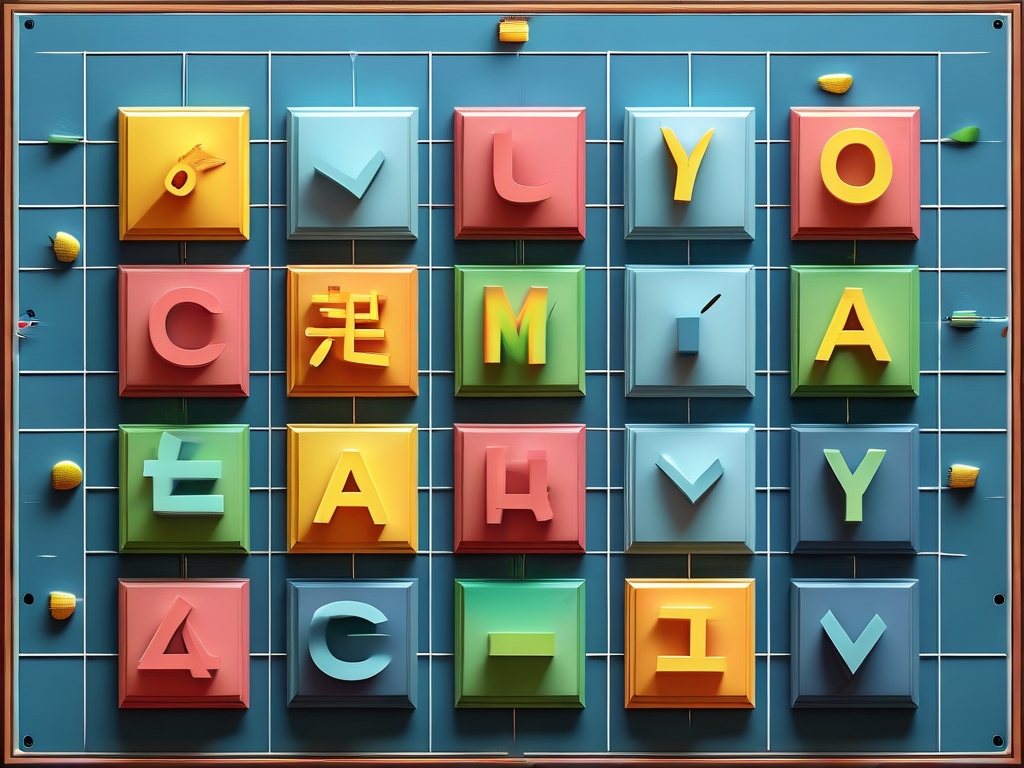Planar grid generation is a fundamental task in computational geometry, computer graphics, and engineering simulations. It involves dividing a two-dimensional domain into discrete cells or elements to facilitate numerical analysis, visualization, or geometric modeling. Over the years, various algorithms have been developed to address the challenges of efficiency, accuracy, and adaptability in grid generation. This article explores the most widely used algorithms for planar grid generation, their principles, and applications.
1. Delaunay Triangulation
Delaunay triangulation is a cornerstone of unstructured grid generation. It ensures that no point lies inside the circumcircle of any triangle in the mesh, maximizing the minimum angle of all triangles to avoid "sliver" elements. This property makes Delaunay triangulation ideal for finite element analysis (FEA) and computational fluid dynamics (CFD), where mesh quality directly impacts simulation accuracy.
The algorithm works by iteratively inserting points and flipping edges to maintain the Delaunay condition. Popular implementations include the Bowyer-Watson algorithm, which efficiently handles dynamic point insertion. Delaunay triangulation is also used in terrain modeling, robotics path planning, and computer vision due to its robustness and adaptability to irregular geometries.
2. Advancing Front Method (AFM)
The advancing front method constructs grids by progressively adding elements from a predefined boundary (the "front"). Starting with an initial set of edges, the algorithm generates new elements—typically triangles or quadrilaterals—by extending the front inward until the entire domain is filled. AFM excels in preserving boundary resolution and controlling element size gradients, making it suitable for aerodynamic simulations and biomedical modeling.
However, AFM requires careful handling of front collisions and complex geometries. Hybrid approaches, such as combining AFM with Delaunay triangulation, are often employed to balance flexibility and robustness.
3. Quadtree-Based Meshing
Quadtree decomposition divides a domain into hierarchical rectangular cells, recursively subdividing regions where higher resolution is needed. This approach is highly efficient for adaptive mesh refinement (AMR), as it dynamically adjusts cell sizes based on error estimators or physical criteria (e.g., stress gradients in structural mechanics).
Quadtree meshes are commonly used in computer graphics for terrain rendering and collision detection. A key challenge is converting the quadtree structure into a conforming mesh with smooth transitions between coarse and fine regions. Techniques like "balanced quadtrees" and edge balancing ensure mesh consistency.
4. Marching Squares
Marching squares is a contour-stitching algorithm for generating grids from implicit surfaces or scalar fields. It processes a 2D grid of sampled data points, classifying each cell based on whether its vertices lie above or below a threshold value. By connecting these classifications, the algorithm constructs isolines or polygonal meshes representing the boundary of a shape.

This method is widely used in medical imaging (e.g., MRI segmentation) and level-set simulations. Its simplicity and parallelizability make it a favorite for real-time applications, though it struggles with sharp features and requires post-processing for smoothing.

5. Structured Grid Generation
Structured grids, where cells align in a regular lattice, are generated using algebraic or differential equation-based methods. Algebraic techniques like transfinite interpolation map a parametric domain to a physical space using blending functions, while PDE-based methods (e.g., elliptic grid generation) solve equations to control mesh smoothness and orthogonality.
Structured grids are computationally efficient due to their regular connectivity, but they struggle with complex geometries. Block-structured grids, which partition the domain into simpler regions, offer a compromise between flexibility and performance.
6. Voronoi Diagrams
Voronoi diagrams partition a plane into regions based on proximity to seed points. Each region (Voronoi cell) contains all points closer to its seed than any other. Voronoi-based meshing is useful in material science (e.g., modeling polycrystalline structures) and robotics (e.g., coverage planning).
Dual to Delaunay triangulation, Voronoi diagrams can generate centroidal Voronoi tessellations (CVT) via Lloyd's algorithm, optimizing cell uniformity. This is critical in applications like wireless sensor network design.
Challenges and Future Directions
Despite advancements, planar grid generation faces challenges:
- Complex geometries: Handling domains with holes, fractures, or multi-material interfaces.
- Scalability: Managing computational costs for large-scale simulations.
- Adaptivity: Balancing resolution with resource constraints.
Emerging trends include machine learning-driven meshing, GPU-accelerated algorithms, and integration with immersive technologies like augmented reality.
From Delaunay triangulation to Voronoi diagrams, each planar grid algorithm offers unique strengths tailored to specific applications. The choice depends on factors like geometry complexity, required mesh quality, and computational resources. As computational demands grow, hybrid methods and AI-enhanced techniques will likely dominate the next generation of grid generation tools.

